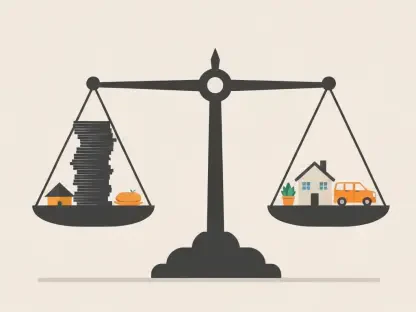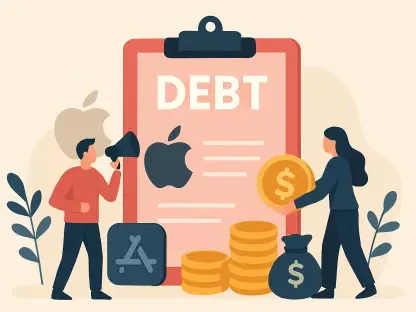I’m thrilled to sit down with Priya Jaiswal, a renowned expert in Banking, Business, and Finance, whose deep knowledge of market analysis, portfolio management, and international business trends offers invaluable insights into the fintech landscape. Today, we’re diving into the evolving relationship between innovative financial platforms and regulatory bodies, focusing on recent challenges faced by fintech companies like SoLo Funds. Our conversation explores the complexities of regulatory scrutiny, the impact of policy shifts, and the strategies fintechs employ to align with compliance while serving their communities. Priya brings a unique perspective on navigating these turbulent waters, making this discussion a must-read for anyone interested in the future of financial technology.
How do you see the current regulatory environment shaping the fintech industry, particularly for companies like SoLo Funds facing scrutiny over business models?
The regulatory environment for fintechs right now is incredibly dynamic and, frankly, quite challenging. Companies like SoLo Funds are operating in a space where innovation often outpaces regulation, leading to misunderstandings or concerns from authorities. Issues like usury or alternative fee structures—such as SoLo’s ‘tip’ system—are under the microscope because they don’t fit neatly into traditional lending frameworks. Regulators are tasked with protecting consumers, so they’re naturally cautious about models that appear to obscure costs or mimic high-interest loans. For fintechs, this means a constant balancing act: pushing boundaries to provide accessible financial solutions while working to educate regulators on how these innovations benefit underserved communities. It’s a tough but necessary dialogue.
Can you unpack the significance of subpoenas and lawsuits from bodies like the New York Attorney General’s office or the CFPB in the context of a fintech’s growth journey?
Absolutely. When a fintech like SoLo Funds receives a subpoena from a state AG or faces a lawsuit from the CFPB, it’s not just a legal hurdle—it’s a pivotal moment that can redefine their trajectory. These actions signal that regulators have serious concerns, often around consumer protection or compliance with lending laws. For instance, the New York AG’s focus on usury with SoLo Funds highlights a broader skepticism about non-traditional lending models. Such scrutiny can strain resources, damage reputation, and even force layoffs or operational pivots, as we’ve seen with some companies. However, it also offers an opportunity to clarify misunderstandings and build trust with regulators by demonstrating transparency and a commitment to consumer welfare. It’s a high-stakes moment that tests a fintech’s resilience and adaptability.
What are some common misconceptions regulators might have about fintech platforms, and how can companies address them effectively?
One of the biggest misconceptions is that fintechs are inherently exploitative or operate in a regulatory gray area to maximize profit at consumers’ expense. For platforms like SoLo Funds, regulators might misinterpret community-driven models or alternative fee structures like ‘tips’ as predatory, when in reality, they’re designed to offer more flexible, accessible options compared to traditional payday loans. The key to addressing this is proactive communication—fintechs need to clearly articulate their mission, show data on how they’re helping users, and be upfront about costs. Building a narrative around the community they serve, as SoLo has done by emphasizing their user base, helps regulators see the human impact. It’s about shifting the lens from suspicion to collaboration.
How do alternative fee structures, like the ‘tip’ system used by some fintechs, create tension with regulatory expectations, and what’s the broader implication for the industry?
Alternative fee structures like ‘tips’ are a double-edged sword. On one hand, they’re innovative ways to fund platforms without charging traditional interest, often appealing to users who feel they’re contributing voluntarily rather than being locked into fixed rates. For SoLo Funds, this system allows borrowers to access funds in a community-driven way. However, regulators often view these as disguised interest or hidden costs, especially if they’re not transparently presented or if opting out isn’t clear. This tension reflects a broader challenge in fintech: how do you design user-friendly, sustainable revenue models that don’t trigger red flags under existing lending laws? The implication is that fintechs may need to rethink or redesign these structures—or push for updated regulations that better accommodate modern financial tools.
What impact do shifts in political administration have on regulatory actions against fintechs, and how should companies prepare for such changes?
Political shifts can dramatically alter the regulatory landscape for fintechs. Take SoLo Funds’ experience with the CFPB—under one administration, they faced a lawsuit over their business practices, but a change in leadership led to the case being dropped. This shows how policy priorities can swing based on who’s in charge, with some administrations prioritizing consumer protection through aggressive enforcement, while others may favor deregulation or give businesses more leeway to innovate. For fintechs, preparation means staying agile: building strong legal and compliance teams, maintaining open lines of communication with regulators, and being ready to pivot strategies if the regulatory tone changes. It’s also about documenting impact—showing how your platform serves the public good can be a powerful defense no matter who’s at the helm.
How can fintechs build stronger relationships with regulators to avoid conflicts or misunderstandings down the line?
Building a strong relationship with regulators starts with transparency and a genuine willingness to collaborate. Fintechs need to proactively engage, not just react when a subpoena lands on their desk. This means inviting regulators into conversations early—sharing data, explaining business models, and even seeking feedback on compliance before issues arise. For a company like SoLo Funds, highlighting their community impact and user testimonials can humanize their mission. It’s also critical to invest in government affairs expertise—having someone who understands both the fintech’s goals and the regulator’s perspective can bridge gaps. Ultimately, it’s about positioning yourself as a partner in solving financial access problems, not as an adversary.
What’s your forecast for the future of fintech regulation, especially regarding innovative lending platforms?
I believe fintech regulation will continue to evolve rapidly over the next few years as both technology and consumer needs outpace current frameworks. For innovative lending platforms, we’re likely to see a push toward clearer guidelines on alternative fee structures and transparency requirements. Regulators will probably demand more standardized disclosures to ensure consumers understand costs, whether it’s a ‘tip’ or interest. At the same time, I expect some states and federal bodies to start crafting fintech-specific rules rather than forcing these companies into outdated banking molds. There’s also a chance for more collaboration—regulatory sandboxes or pilot programs could become more common, allowing fintechs to test models under supervision. But it won’t be smooth; tensions will persist as regulators balance innovation with consumer protection. The key for fintechs will be staying ahead of the curve through compliance and advocacy.









